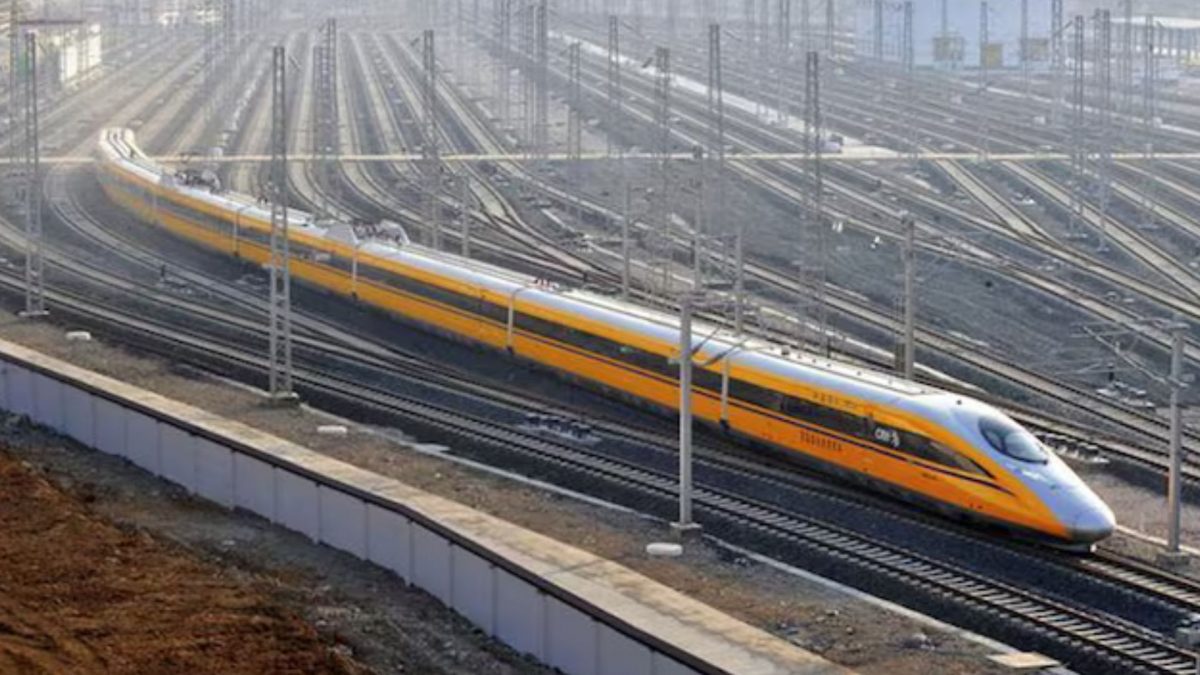China is set to implement significant fare hikes on four major bullet train lines, marking a rare move in its efforts to address rising costs and heavy debts incurred during the construction of its expansive railway network over nearly two decades.
Addressing rising costs
The decision to raise train ticket prices is part of a broader strategy to increase prices for public services. In some cities, earlier this year, there was an increase in water and natural gas bills.
Local governments in China heavily subsidised public services, but their substantial municipal debts have constrained their ability to maintain low prices. Raising prices can help mitigate losses for major state-owned enterprises providing these services, while also counteracting the widespread economic slowdown in China by passing some of the cost burden onto consumers.
Impact on state-owned enterprises
The fare increases aim to stem losses at state-owned enterprises responsible for providing public services, such as the China State Railway Group. Rising prices also help offset the decline in other sectors of China’s economy, as growth slows.
Political sensitivities
David Fishman, a senior manager at the Singapore-based power consulting firm, the Lantau Group, said that large factories should now be charged market rates. In China, increasing rail fares poses a sensitive political challenge. Bullet trains symbolise the nation’s infrastructure prowess, often built before consumer demand, funded by extensive borrowing, reaching $870 billion for the China State Railway Group alone.
Public response
The fare hikes have sparked considerable discussion on social media platforms in China, with many expressing discontent over stagnant wages and declining real estate prices. The increases particularly affect peak travel routes between affluent cities along the Yangtze River and its tributaries.
Impact Shorts
More ShortsThe finance ministry has instructed twelve of China’s most heavily indebted provinces to decrease their infrastructure expenditure this year in return for debt relief. China’s leadership is transitioning the nation’s growth strategy away from infrastructure and real estate investments towards high-tech manufacturing and exports. However, this shift has provoked concern from the United States and Europe, fearing that increased Chinese exports may lead to job losses and weaken their industrial foundation.
Since 2008, China has inaugurated an extensive network of bullet train routes, spanning 28,000 miles and connecting major cities as well as hundreds of smaller towns. The first line commenced operation just before the Beijing Summer Olympics. China’s high-speed trains typically reach speeds of 186 or 217 miles per hour, maintaining their velocity due to the straight tracks.
However, the debt accrued to construct this network extends beyond the China State Railway Group.
Many lines are owned by joint ventures with provincial and municipal governments, which are facing challenges in subsidising transportation as their financial capabilities diminish. Some older lines are now requiring increased maintenance, hastily constructed during the global financial crisis to provide employment opportunities for those displaced by factory closures.
The rationale behind the forthcoming fare increases, effective from June 15, was elucidated by the rail system in a statement to the official Xinhua news agency, citing significant changes in operating costs such as line maintenance, vehicle procurement, equipment upgrades, and labour employment.
Mitigating measures
While peak fares will see substantial increases, the rail system plans to offer deeper discounts for off-peak tickets and slower trains, aimed at making rail travel more accessible for some passengers.
Comparative affordability
Following the price adjustments, the peak fare for a second-class high-speed train ticket from Wuhan to Guangzhou, spanning nearly 600 miles and completed in under four hours, is set to rise to $78. First-class tickets, offering additional legroom with two seats on either side of the aisle akin to economy class on American trains, will be priced at $125. Meanwhile, a lie-flat business class seat will be available at $273.
Despite the fare increases, China’s bullet trains remain more affordable than those in Western countries. International rail consultant David Feng noted that Chinese railways still offer lower fares compared to Europe, Japan, and the United States.
Growing demand & infrastructure expansion
Despite financial challenges, China’s high-speed rail network continues to expand, connecting major cities and smaller towns alike. The popularity of bullet trains has led to overcrowding at stations, particularly during holidays, underscoring the demand for efficient transportation options.
Last year, China State Railway injected an additional $108 billion into further expanding its network, primarily to link peripheral regions. However, despite this investment, the company reported operating profits of merely $470 million, leaving limited funds available for debt repayment. The development of new towns and cities along high-speed rail lines has been significant, with high-rise zoning accommodating a large population residing near stations and relying on the rail service. Many Chinese individuals utilize these lines for weekly or even daily commutes from low-cost areas, where monthly apartment rents can be below $100, to employment opportunities in larger, higher-cost cities.
As China grapples with mounting debts and rising costs associated with its extensive railway network, the decision to increase bullet train fares reflects broader challenges in balancing economic growth with financial sustainability. The fare hikes aim to address financial strains while ensuring continued investment in crucial infrastructure.
With inputs from New York Times
)